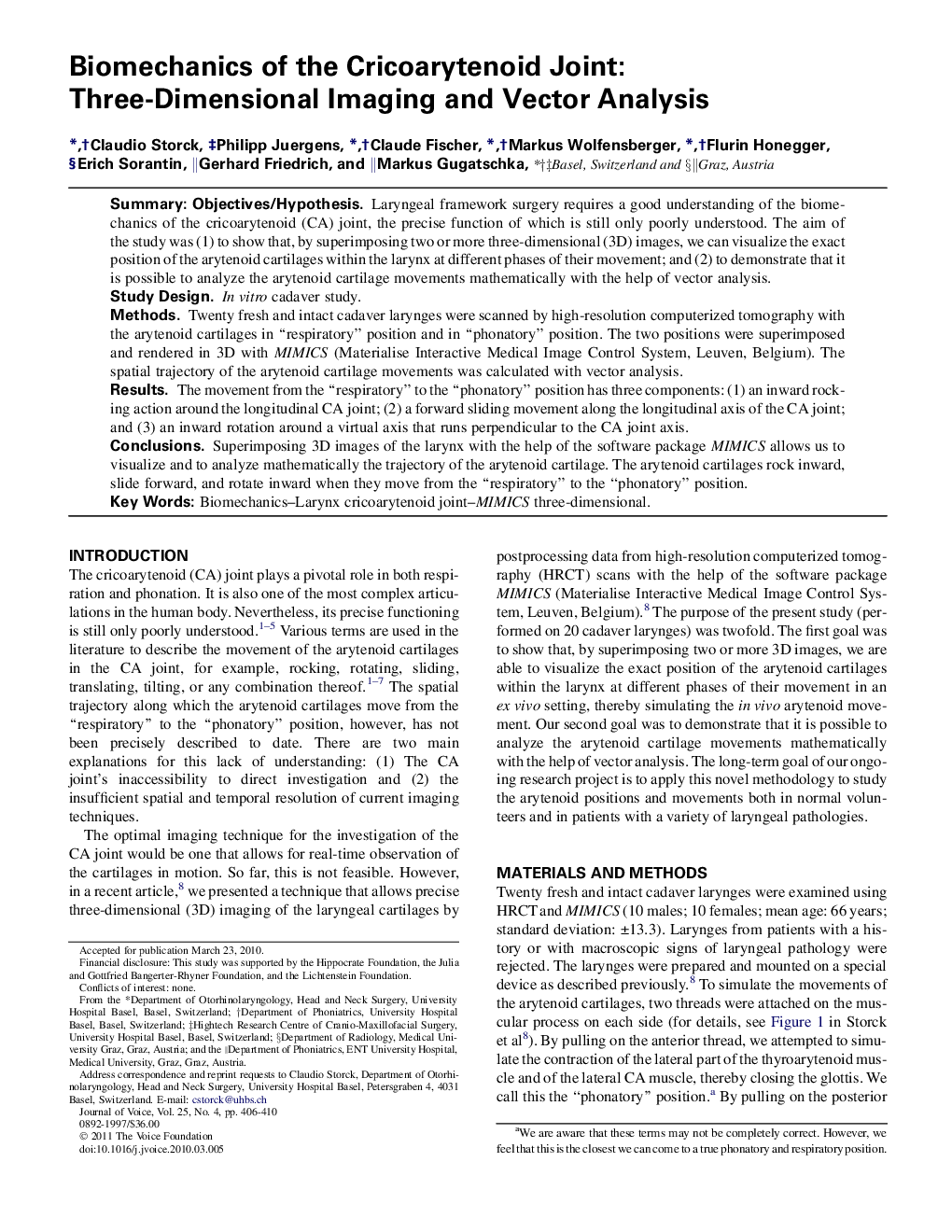| Article ID | Journal | Published Year | Pages | File Type |
|---|---|---|---|---|
| 1102491 | Journal of Voice | 2011 | 5 Pages |
SummaryObjectives/HypothesisLaryngeal framework surgery requires a good understanding of the biomechanics of the cricoarytenoid (CA) joint, the precise function of which is still only poorly understood. The aim of the study was (1) to show that, by superimposing two or more three-dimensional (3D) images, we can visualize the exact position of the arytenoid cartilages within the larynx at different phases of their movement; and (2) to demonstrate that it is possible to analyze the arytenoid cartilage movements mathematically with the help of vector analysis.Study DesignIn vitro cadaver study.MethodsTwenty fresh and intact cadaver larynges were scanned by high-resolution computerized tomography with the arytenoid cartilages in “respiratory” position and in “phonatory” position. The two positions were superimposed and rendered in 3D with MIMICS (Materialise Interactive Medical Image Control System, Leuven, Belgium). The spatial trajectory of the arytenoid cartilage movements was calculated with vector analysis.ResultsThe movement from the “respiratory” to the “phonatory” position has three components: (1) an inward rocking action around the longitudinal CA joint; (2) a forward sliding movement along the longitudinal axis of the CA joint; and (3) an inward rotation around a virtual axis that runs perpendicular to the CA joint axis.ConclusionsSuperimposing 3D images of the larynx with the help of the software package MIMICS allows us to visualize and to analyze mathematically the trajectory of the arytenoid cartilage. The arytenoid cartilages rock inward, slide forward, and rotate inward when they move from the “respiratory” to the “phonatory” position.
